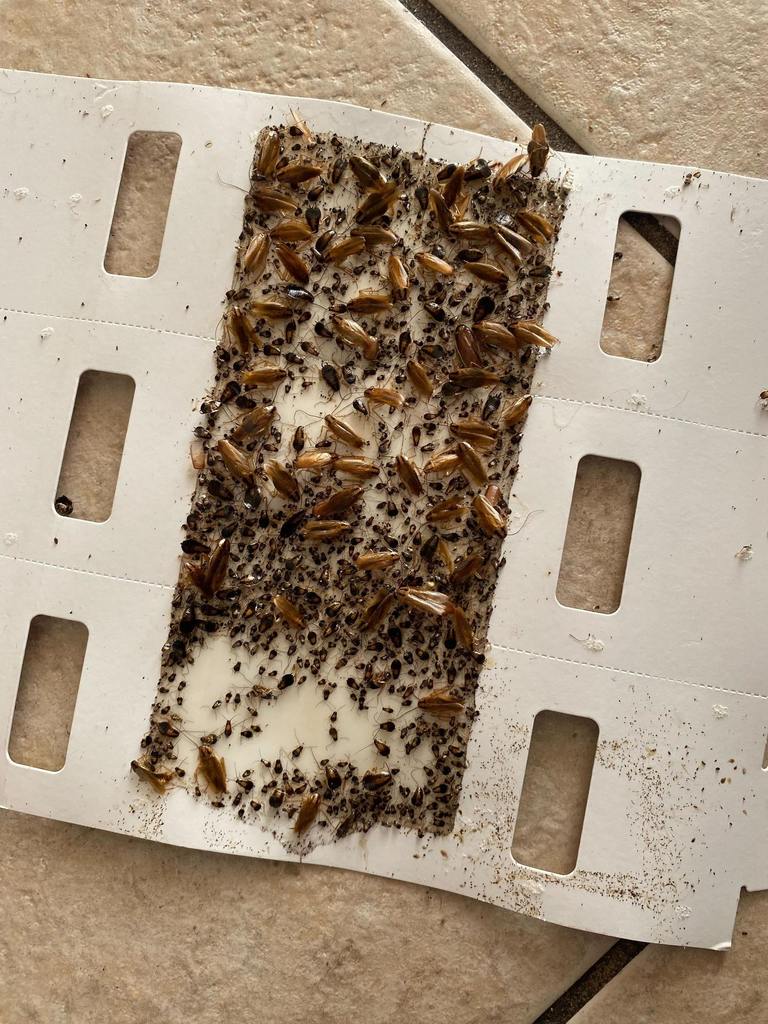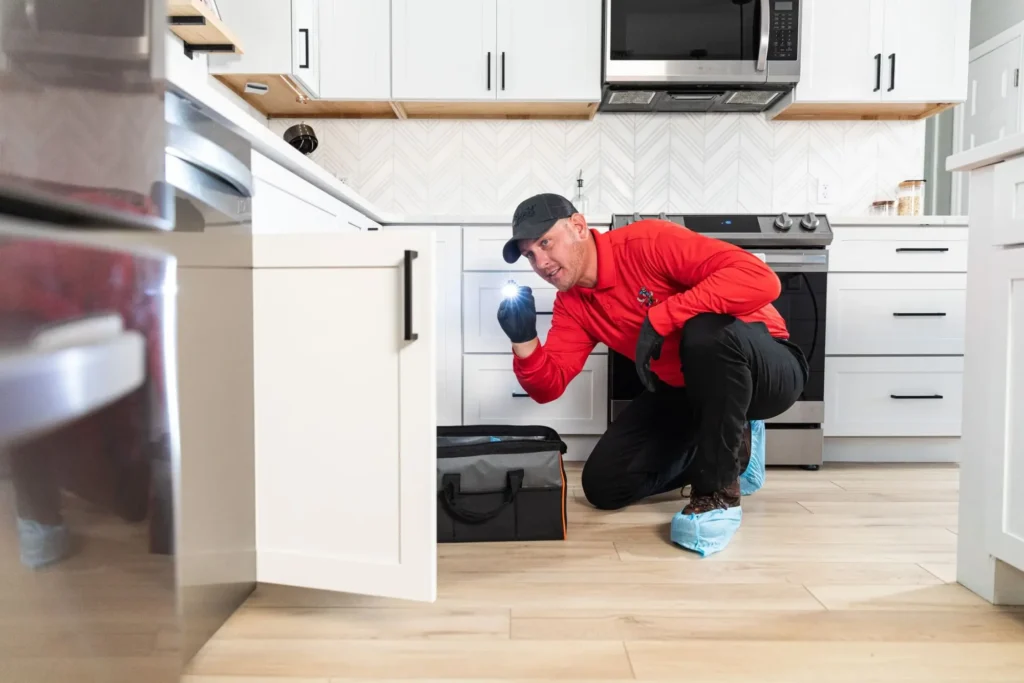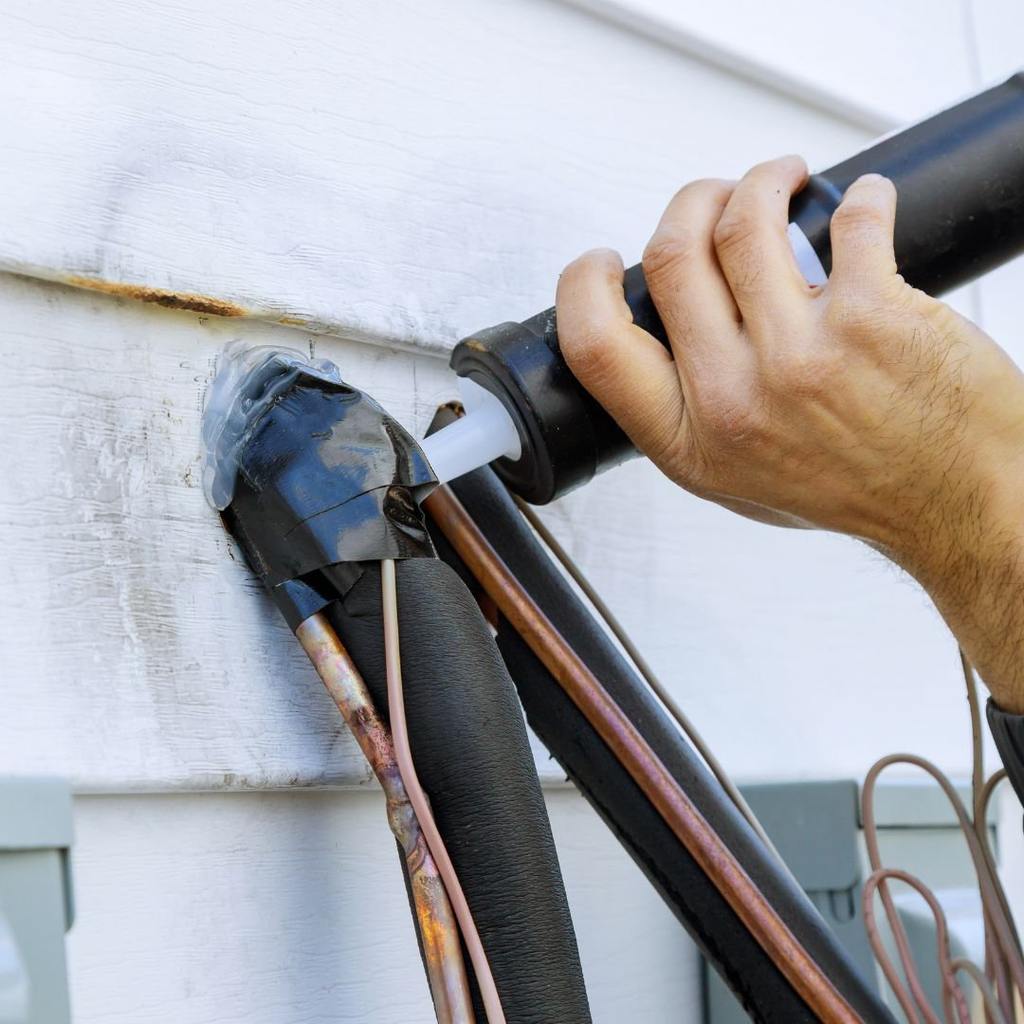
Cockroach Control in Southwest Florida
Southwest Florida, with its warm, humid climate and diverse ecosystems, provides an ideal environment for cockroaches to thrive. From the bustling streets of Naples to the serene beaches of Fort Myers, these resilient pests can be a year-round nuisance for homeowners and businesses alike. The region's unique combination of urban development and natural habitats creates numerous opportunities for cockroach infestations, making effective pest control a crucial concern for residents.
If you're dealing with a cockroach problem in your Southwest Florida home, it's essential to act quickly and decisively. These pests can rapidly multiply, posing health risks and causing property damage if left unchecked. Fortunately, professional help is available to tackle even the most stubborn infestations. All U Need Pest Control specializes in comprehensive cockroach management tailored to the specific challenges of Southwest Florida. By calling (888) 239-Bugs (888-239-2847), you can take the first step towards reclaiming your home from these unwanted invaders.
Pest Control Services in Southwest Florida

How to Get Rid of Cockroaches in Southwest Florida
When facing a cockroach infestation in Southwest Florida, it’s crucial to understand that these pests are particularly well-adapted to our local climate. The high humidity and year-round warm temperatures create an ideal breeding ground for various cockroach species. To effectively combat these resilient insects, we employ a multi-faceted approach that takes into account the unique environmental factors of our region.
Our strategy begins with a thorough assessment of your property, identifying the specific cockroach species present and the extent of the infestation. We consider factors such as the proximity to water sources, like the Gulf of Mexico or the many canals that crisscross our area, as well as the type of vegetation surrounding your home. These elements can significantly influence cockroach behavior and habitat preferences in Southwest Florida.
Once we’ve gathered this crucial information, we develop a tailored plan that may include a combination of baiting, insecticide application, and integrated pest management strategies. Our goal is not just to eliminate the current infestation but also to create an environment that discourages future cockroach activity. This comprehensive approach ensures long-term protection for your Southwest Florida home.
Cockroach Baiting
Cockroach baiting is a highly effective method we employ in Southwest Florida homes. This technique involves strategically placing bait stations in areas where cockroaches are likely to frequent. The bait contains a slow-acting insecticide mixed with attractive food sources. In our humid climate, we use specially formulated baits that can withstand moisture without losing their effectiveness. We often place these baits in kitchens, bathrooms, and near water heaters – areas where cockroaches commonly seek shelter in Southwest Florida homes.
Cockroach Insecticide
When dealing with severe infestations, particularly in older Southwest Florida homes with numerous hiding spots, we may recommend the use of insecticides. Our team is trained to apply these products safely and effectively, targeting areas where cockroaches are most likely to hide and breed. We pay special attention to cracks and crevices, behind appliances, and in crawl spaces – all common problem areas in our region’s homes. The insecticides we use are selected for their effectiveness against the specific cockroach species prevalent in Southwest Florida, ensuring optimal results while minimizing environmental impact.
Integrated Pest Management Strategies
In Southwest Florida, where the balance between urban living and natural ecosystems is delicate, we place a strong emphasis on Integrated Pest Management (IPM) strategies. This approach focuses on long-term prevention and control through a combination of techniques. We start by identifying and sealing potential entry points, which is particularly important in our area where homes may settle and develop small cracks over time due to the sandy soil. We also advise on proper food storage and waste management practices to reduce attractants for cockroaches. Additionally, we may recommend modifications to landscaping, such as trimming vegetation away from the home’s foundation, to create a less hospitable environment for cockroaches. This comprehensive approach is especially effective in Southwest Florida, where the outdoor environment can quickly become an extension of indoor living spaces.

Cockroach Treatment in Southwest Florida
Our cockroach treatment process in Southwest Florida is designed to address the unique challenges posed by our subtropical climate and diverse cockroach species. We begin with a thorough inspection of your property, paying close attention to areas that are particularly prone to infestation in our region, such as outdoor kitchens, pool areas, and lanais. These spaces, common in Southwest Florida homes, often provide ideal conditions for cockroaches to thrive.
Following the inspection, we implement a customized treatment plan. This typically involves an initial flush-out of cockroaches from their hiding spots, followed by targeted applications of baits and insecticides. We also focus on treating the exterior of your home, creating a barrier against reinfestation. This is particularly important in Southwest Florida, where the line between indoor and outdoor living can be blurred.
Throughout the treatment process, we educate homeowners on preventive measures specific to our area. This might include advice on managing moisture levels in and around the home, proper storage of outdoor furniture cushions, and regular cleaning of gutters to prevent water accumulation – all factors that can contribute to cockroach problems in our humid climate.

Signs of a Cockroach Infestation in Southwest Florida
Recognizing the signs of a cockroach infestation early is crucial for effective control, especially in Southwest Florida where these pests can multiply rapidly. Here are some key indicators to watch for:
- Live Cockroaches The most obvious sign is seeing live cockroaches, particularly during the day. In Southwest Florida, you might spot them scurrying across your lanai or outdoor kitchen area, especially during the cooler evening hours.
- Droppings Cockroach droppings resemble small, dark specks similar to coffee grounds or pepper. In our humid climate, you might notice these more frequently in areas prone to moisture, such as under sinks or around air conditioning units.
- Egg Cases Cockroach egg cases, or oothecae, are small, brown, oval-shaped capsules. In Southwest Florida homes, these are often found in hidden, warm areas like behind appliances or in cluttered storage spaces.
- Musty Odor A strong, musty odor can indicate a large cockroach infestation. This smell might be more noticeable in enclosed spaces like garages or storage sheds, which are common in many Southwest Florida properties.
- Smear Marks Dark, irregular smear marks along walls or in corners can indicate cockroach traffic. These marks are often more visible in areas where cockroaches frequently travel, such as along baseboards or around plumbing fixtures.
- Cast Skins As cockroaches grow, they shed their exoskeletons. Finding these light brown, empty shells is a clear sign of an active infestation. In our warm climate, cockroaches can grow and molt more frequently than in cooler regions.
- Damage to Food Packaging Cockroaches can chew through cardboard and thin plastic. Check your pantry for any signs of gnawing or holes in food packaging, especially in items that have been stored for a while.
- Unexplained Allergic Reactions If you or family members experience sudden allergy symptoms, it could be due to cockroach allergens. This is particularly relevant in Southwest Florida, where indoor/outdoor living can increase exposure to these pests.
Being vigilant about these signs is especially important in our region, where the climate allows cockroaches to remain active year-round. Early detection can prevent a small problem from becoming a major infestation.

How to Check Your Southwest Florida Home for Cockroaches
Conducting a thorough inspection of your Southwest Florida home is crucial for identifying and addressing cockroach infestations. Here’s a step-by-step guide tailored to our region:
- Start with the Kitchen Begin your inspection in the kitchen, a prime area for cockroaches in any home, but especially in Southwest Florida where the warm climate can accelerate food spoilage. Check behind and under appliances, inside cabinets, and along baseboards. Don’t forget to examine the spaces around your dishwasher and refrigerator, as these appliances can create warm, moist environments that cockroaches love.
- Examine Bathrooms Our humid climate makes bathrooms particularly attractive to cockroaches. Inspect under sinks, around toilets, and in cabinets. Pay special attention to areas where plumbing enters walls, as these can be entry points for pests.
- Check Outdoor Living Spaces In Southwest Florida, outdoor kitchens, lanais, and pool areas are common features that can harbor cockroaches. Inspect these areas thoroughly, including under outdoor furniture, around grills, and in storage areas for pool equipment.
- Inspect Garages and Storage Areas These spaces often contain cardboard boxes and clutter, providing ideal hiding spots for cockroaches. In our climate, garages can also be warm and humid, creating perfect conditions for these pests.
- Look for Water Sources Given our proximity to the Gulf and numerous waterways, check areas near water sources both inside and outside your home. This includes checking around air conditioning units, which can produce condensation.
- Use a Flashlight Conduct your inspection at night using a flashlight. Cockroaches are nocturnal, so you’re more likely to catch them active during evening hours.
- Set Sticky Traps Place sticky traps in suspected problem areas to monitor cockroach activity. Check these traps regularly to gauge the extent of the infestation and identify the most affected areas.
- Check Landscaping Examine the areas immediately surrounding your home. In Southwest Florida, lush vegetation can provide shelter for cockroaches. Look for signs of activity in mulch, leaf litter, and around irrigation systems.
- Inspect Entry Points Given our climate, homes in Southwest Florida may develop small cracks or gaps over time. Check around windows, doors, and the foundation for potential entry points.
- Don’t Forget the Attic While less common, cockroaches can inhabit attic spaces, especially if there are moisture issues. Inspect your attic, paying attention to areas around vents and any stored items.
By thoroughly checking these areas, you can identify cockroach problems early and take prompt action to address them. Remember, in Southwest Florida’s climate, regular inspections are key to preventing infestations from taking hold.

What Do Cockroaches Look Like in Southwest Florida?
In Southwest Florida, we encounter several species of cockroaches, each with distinct characteristics. Understanding what these pests look like can help you identify and address infestations more effectively. Here’s a guide to the most common cockroach species in our area:
Smoky Brown Cockroach
The Smoky Brown Cockroach is a common sight in Southwest Florida, particularly in outdoor areas. These cockroaches are characterized by their large size, typically growing to about 1.5 inches in length. They have a uniform, dark brown to mahogany color, which gives them their “smoky” appearance. In our region, you’ll often find these cockroaches in areas with high moisture, such as around air conditioning units, in mulch beds, or near pool equipment. They are excellent flyers and are attracted to lights, which is why you might see them around your porch or lanai in the evenings.
American Cockroach
American Cockroaches, also known as Palmetto Bugs in Florida, are one of the largest cockroach species you’ll encounter in Southwest Florida. They can grow up to 2 inches in length and are reddish-brown with a yellowish figure-eight pattern on the back of their head. These cockroaches are particularly well-adapted to our climate and are often found in moist areas both indoors and outdoors. In Southwest Florida homes, you might spot them in bathrooms, kitchens, and basements, as well as in yard debris or compost piles outside.
Australian Cockroach
The Australian Cockroach is similar in appearance to the American Cockroach but slightly smaller, typically reaching about 1.25 inches in length. They are distinguished by their reddish-brown color with pale yellow stripes on the edges of their wings. In Southwest Florida, these cockroaches are often found in outdoor areas, particularly in gardens, mulch, and leaf litter. They can also invade homes, especially those with attached greenhouses or abundant indoor plants.
German Cockroach
German Cockroaches are smaller than the other species, usually only about half an inch long. They are light brown to tan in color with two dark parallel stripes running from their head to their wings. Despite their small size, German Cockroaches are one of the most problematic species in Southwest Florida homes. They reproduce quickly and are often found in kitchens and bathrooms, where they seek out food and moisture. In our warm climate, these cockroaches can breed year-round, making infestations particularly challenging to control.
Florida Woods Cockroach
The Florida Woods Cockroach, native to our region, is a large species that can grow up to 1.5 inches long. They are dark brown to black in color and have a glossy appearance. Unlike some other cockroach species, Florida Woods Cockroaches prefer outdoor environments and are rarely found inside homes. In Southwest Florida, you might encounter them in wooded areas, under palm fronds, or in piles of leaves and yard debris. While they can occasionally wander into homes, they typically don’t establish indoor infestations.
Each of these cockroach species presents unique challenges in Southwest Florida. Their ability to thrive in our warm, humid climate means that vigilance and proper pest control measures are essential for keeping them at bay. By recognizing these different types of cockroaches, you can better understand the nature of any infestation you might encounter and take appropriate steps to address it.

Eco-friendly Solutions for Cockroach Control
In Southwest Florida, where our unique ecosystem requires careful consideration, eco-friendly cockroach control solutions are not just preferable – they’re essential. These methods allow us to effectively manage cockroach populations while minimizing the impact on our environment and native wildlife. Here are some eco-friendly approaches tailored to our region:
- Diatomaceous Earth This natural powder is highly effective against cockroaches in our humid climate. Sprinkle it in areas where you’ve seen cockroach activity, such as along baseboards or under appliances. The fine particles damage the cockroaches’ exoskeletons, leading to dehydration. In Southwest Florida’s moist environment, you may need to reapply more frequently than in drier areas.
- Boric Acid Another natural option, boric acid, can be used as a dust in cracks and crevices where cockroaches hide. It’s particularly effective in our climate when mixed with attractants like sugar or peanut butter. Be sure to keep it away from areas accessible to pets and children.
- Natural Predators Encourage natural cockroach predators in your yard. Lizards, which are abundant in our region, are excellent at controlling cockroach populations. Creating a lizard-friendly garden can help keep outdoor cockroach numbers in check.
- Citrus-Based Repellents Cockroaches dislike the smell of citrus. Use lemon or orange peels around your home, particularly in areas prone to moisture. This can be an effective and pleasant-smelling deterrent in our citrus-rich region.
- Proper Food Storage Use airtight containers for food storage, especially important in our warm climate where food can spoil quickly. Regularly clean pantries and kitchen areas to remove crumbs and food residues that attract cockroaches.
- Moisture Control In Southwest Florida’s humid environment, controlling moisture is crucial. Use dehumidifiers in damp areas of your home and fix any leaky pipes or faucets promptly.
- Natural Baits Create cockroach baits using a mixture of boric acid and sugar or cornstarch. Place these in small containers with holes punched in the lids in areas where you’ve seen cockroach activity.
- Regular Cleaning Maintain a clean home environment by vacuuming regularly, especially in hidden areas like under furniture and appliances. Pay special attention to outdoor living spaces, which are common entry points for cockroaches in our region.
- Neem Oil This natural insecticide can be effective against cockroaches. Mix neem oil with water and spray it in areas where cockroaches are commonly found. It’s safe for use around plants, making it ideal for treating outdoor areas in Southwest Florida homes.
By implementing these eco-friendly solutions, you can effectively manage cockroach populations while preserving the delicate balance of Southwest Florida’s ecosystem. These methods are not only safer for your family and pets but also help maintain the natural beauty and biodiversity of our region.

Preventing Cockroaches in Southwest Florida
Preventing cockroach infestations in Southwest Florida requires a proactive approach tailored to our unique climate and environment. By implementing these strategies, you can significantly reduce the likelihood of cockroach problems in your home:
- Seal Entry Points Inspect the exterior of your home for cracks and crevices, paying special attention to areas around windows, doors, and the foundation. In our climate, homes can settle and develop small openings over time. Use weather-stripping, caulk, or expandable foam to seal these potential entry points.
- Manage Outdoor Spaces In Southwest Florida, our outdoor living areas can inadvertently attract cockroaches. Keep patios, lanais, and pool decks clean and free of food debris. Store outdoor cushions and equipment in sealed containers when not in use to prevent them from becoming cockroach habitats.
- Control Moisture Our humid climate makes moisture control crucial. Fix leaky pipes promptly, use dehumidifiers in damp areas, and ensure proper ventilation in bathrooms and kitchens. Pay attention to air conditioning units, which can create condensation attractive to cockroaches.
- Proper Landscaping Maintain your yard to discourage cockroach populations. Keep mulch away from your home’s foundation, trim bushes and trees to prevent them from touching your house, and remove leaf litter regularly. Consider using cockroach-repelling plants like catnip or chrysanthemums in your landscaping.
- Food Storage In our warm climate, proper food storage is essential. Use airtight containers for pantry items and pet food. Clean up spills immediately and avoid leaving pet food out overnight.
- Regular Cleaning Implement a thorough cleaning routine, paying special attention to kitchens and bathrooms. In Southwest Florida homes, where indoor and outdoor living spaces often blend, extend your cleaning efforts to patios and outdoor kitchens.
- Manage Waste Keep garbage in sealed containers and dispose of it regularly. In our climate, organic waste can decompose quickly, attracting pests.
- Inspect Incoming Items Before bringing boxes, groceries, or secondhand items into your home, inspect them for signs of cockroaches. This is particularly important in our region, where cockroaches can be active year-round.
- Natural Repellents Use natural repellents like bay leaves or cucumber slices in areas prone to cockroach activity. These can be effective deterrents and are safe for use around food preparation areas.
- Professional Inspections Consider scheduling regular pest inspections, especially important in Southwest Florida where pest activity can be constant. Professional pest control experts can identify potential problems before they become full-blown infestations.
- Educate Family Members Ensure everyone in your household understands the importance of cleanliness and proper food storage in preventing cockroach infestations.
- Address Water Accumulation In our rainy climate, pay attention to areas where water might accumulate around your property. Ensure proper drainage and fix any areas of standing water, which can attract cockroaches.
By implementing these preventive measures, you can create an environment that is far less attractive to cockroaches. Remember, in Southwest Florida’s warm and humid climate, prevention is an ongoing process that requires vigilance and regular maintenance.

Exterminate Cockroaches From Your Southwest Florida Home with All U Need Pest Control
Dealing with cockroaches in Southwest Florida doesn’t have to be a constant battle. At All U Need Pest Control, we understand the unique challenges posed by our region’s climate and ecosystem. Our team of experts is equipped with the knowledge, tools, and eco-friendly solutions necessary to effectively eliminate cockroach infestations while respecting the delicate balance of our local environment.
We offer comprehensive cockroach control services tailored specifically to the needs of Southwest Florida homes. From Naples to Fort Myers, and everywhere in between, our treatments are designed to not only eradicate existing infestations but also prevent future problems. We take into account the specific species of cockroaches common in our area, the layout of your property, and the environmental factors that contribute to pest issues in our region.
Don’t let cockroaches compromise the comfort and safety of your Southwest Florida home. Contact All U Need Pest Control today at (888) 239-Bugs (888-239-2847) to schedule a thorough inspection and customized treatment plan. Our team is ready to help you reclaim your space from these persistent pests, ensuring a clean, healthy, and cockroach-free environment for you and your family. Take the first step towards a pest-free home – call us now and experience the peace of mind that comes with professional, locally-focused pest control services.
Location Contact:
2840 Winkler Avenue Fort Myers, FL 33916
Get Directions for 2840 Winkler AvenueFort Myers, FL 33916 on Google Maps239-686-0689
Call All "U" Need Pest Control